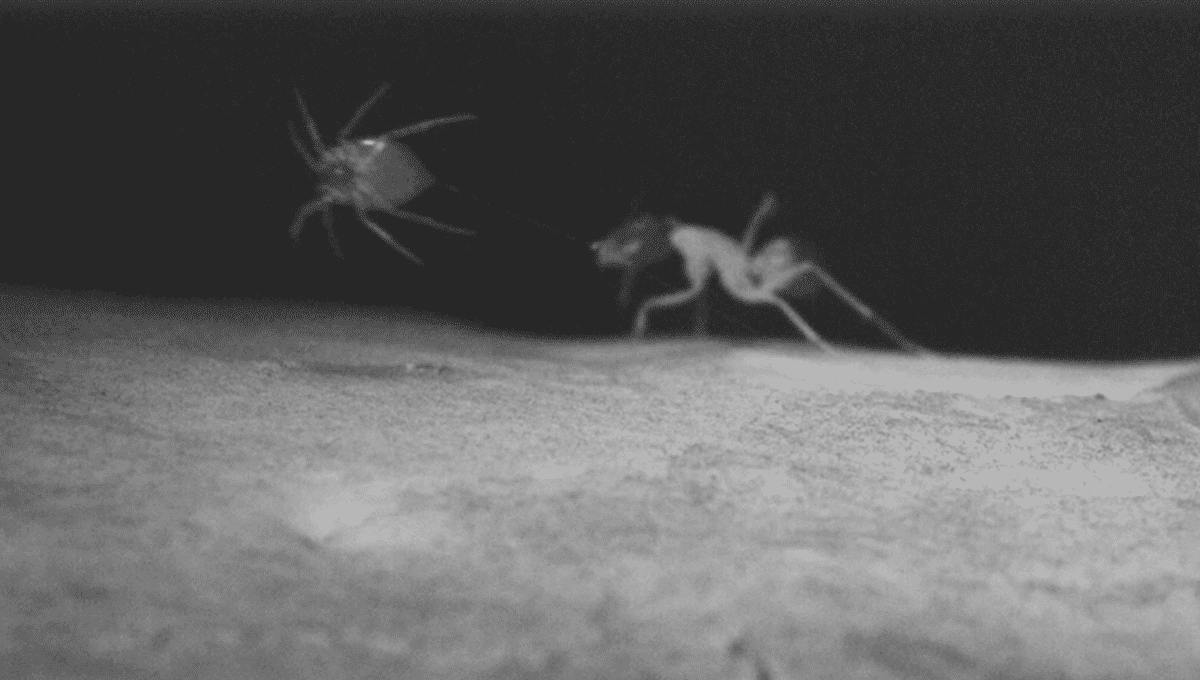
Ant-slayer spiders (Euryopis umbilicata) are the acrobats of the arachnid world. Found in eastern Australia, they spend the day hiding under the bark of eucalyptus trees before coming out to hunt in the twilight. Unlike other spider species, they do not weave a web to catch their prey – they have a much more dynamic hunting strategy.
Facing towards the ground on a tree trunk, they lie in wait for their prey: the banded sugar ant (Camponotus consobrinus) that also comes onto the eucalyptus trees to forage in the evening. The ants are around twice the body length of their predators but with a similar mass.
As the spiders wait, they attach a line of silk to the trunk of the tree. Then, as the ant approaches, they choose their moment to leap into the air, dragging more sticky silk behind them and over the unsuspecting ant. The spider can go from a standstill to a max speed of 25.47 centimeters per second (10 inches per second) within milliseconds.
The spider then drops off the tree, but is still attached by the silk line to both the prey and the trunk of the tree. After the attack stage, the spider encircles the ant, tangling it in more silk before biting and carrying it away to eat.
The researchers observed this behavior 60 times, noting that all 51 of the ants that were successfully caught by the spider in the first leap were then captured and later consumed. That makes this hunting technique extremely successful, with an 85 percent prey capture success rate.
Furthermore, despite their daredevil acrobatics, the team never saw a spider injured or killed during the hunting process. Other species specializing in catching ants, such as the feather-legged assassin bug (Ptilocnemus lemur) have only a 2.5 percent rate of successful captures. The ant-slayer spider also far surpasses apex predators such as lions and cheetahs that have a success rate of less than 50 percent.
The team suggests that the key part of the hunting strategy is down to the behavioral precision of the spider jumping within a few milliseconds, combined with the deployment of the silk to capture the ant. Unsuccessful attacks can be observed below.
Highly specialized diets like that of the ant-slayer spider are uncommon, as only around 0.3 percent of known spider species feed on ants – to specialize further to just one species is incredibly unusual among predatory species. Researchers plan to study more into how the spiders are able to recognize their prey while avoiding recognition themselves. The team also plans to explore the mechanics of the spider movement that allows their acrobatic hunting style to take place.
The paper is published in PNAS.
Source Link: Ant-Slayer Spiders Are Extremely Successful Hunting Acrobats